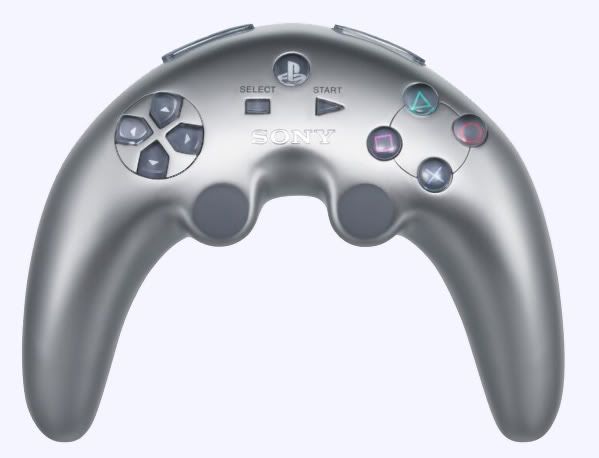Pads are very subjective and are sensitive to individual tastes and the type of games being played.
I currently have a Saturn, DC, GC, Xbox and a PS2 with 5 different pad designs hooked up. Swapping between them, I just adapt to them. None are perfect.
-- Saturn Nights 3D pad--
Pros: like the 6 non-coloured face buttons, ABC, XYZ. Like the D-pad and shoulder triggers.
Cons: cheap analogue stick, no dual sticks.
--PS2 DS2--
Pros: like the neutral face buttons, 4 shoulder buttons and symmetrical analogue sticks.
Cons: L2 and R2 placements, D-pad.
--Dreamcast--
Pros: Same as Saturn but better analogue stick.
Cons: Lacks 6 face buttons from Saturn, no dual sticks.
--Xbox Controller s--
Pros: like d-pad, analogue sticks and triggers.
Cons: black and white buttons, start and select placements. Rounded buttons.
--Gamecube--
Pros: Like d-pad, analogue sticks and triggers.
Cons: B and XY should be consistently shaped. Z placement.
--N64--
Pros: z-trigger and analogue stick. C-buttons and AB buttons.
Cons: face buttons not consistent. D-pad and analogue stick needed you to remove hands from grip. No dual sticks.
I like them and hate them equally! My ideal pad would probably be a Saturn 3D + PS2 DS2 hybrid, combine d-pad+analogue stick as one stick and replace d-pad with a mini-trackball... or just gimme a remote!
I currently have a Saturn, DC, GC, Xbox and a PS2 with 5 different pad designs hooked up. Swapping between them, I just adapt to them. None are perfect.
-- Saturn Nights 3D pad--
Pros: like the 6 non-coloured face buttons, ABC, XYZ. Like the D-pad and shoulder triggers.
Cons: cheap analogue stick, no dual sticks.
--PS2 DS2--
Pros: like the neutral face buttons, 4 shoulder buttons and symmetrical analogue sticks.
Cons: L2 and R2 placements, D-pad.
--Dreamcast--
Pros: Same as Saturn but better analogue stick.
Cons: Lacks 6 face buttons from Saturn, no dual sticks.
--Xbox Controller s--
Pros: like d-pad, analogue sticks and triggers.
Cons: black and white buttons, start and select placements. Rounded buttons.
--Gamecube--
Pros: Like d-pad, analogue sticks and triggers.
Cons: B and XY should be consistently shaped. Z placement.
--N64--
Pros: z-trigger and analogue stick. C-buttons and AB buttons.
Cons: face buttons not consistent. D-pad and analogue stick needed you to remove hands from grip. No dual sticks.
I like them and hate them equally! My ideal pad would probably be a Saturn 3D + PS2 DS2 hybrid, combine d-pad+analogue stick as one stick and replace d-pad with a mini-trackball... or just gimme a remote!

